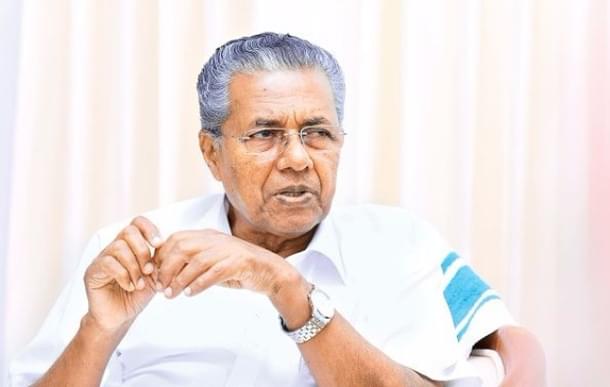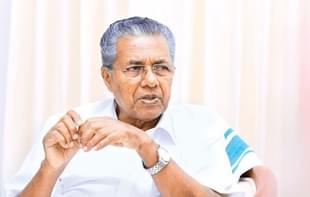Politics
The Kerala Model Is Just A Sham; The State Survives Only On Gulf Remittances Sent By Migrants
Ananth Krishna
Nov 01, 2017, 02:26 PM | Updated 02:26 PM IST
Save & read from anywhere!
Bookmark stories for easy access on any device or the Swarajya app.


The “Kerala model of development” is widely recognised and praised by many eminent economists and scholars. The “model” was first proposed in the 1970s, has been celebrated by many left-leaning economists, and was introduced as an “alternative” to the Gujarat model of development by some during the 2014 Lok Sabha elections.
Many international media organisations have published articles praising the Kerala model, the most recent being The Washington Post, in an article titled ‘One of the few places where a communist can still dream’, gushing over the state’s successes.
While there was some mention of the foreign remittances and how it finances the state and its deficit (“More than a third of Kerala’s gross domestic product last year came from remittances.”), the article did not deal with it extensively and omitted some of the more alarming statistics. (Rather surprisingly, a 2007 article in the New York Times gets closer to reality.)
A close look at the numbers, however, reveals the absurd or deceptive nature of development in Kerala.
Granted, Kerala has achieved a stunning rate of success in implementing social programmes and come out with flying colours in all the metrics. However, what many ignore, knowingly or unknowingly, is the lack of an economic model, based on which the state’s social development stands.
The first point that proponents of the “Kerala model” bring up is the state’s high quality of life coinciding with low per capita incomes. What is concealed, of course, is that household remittances – the amount that a household receives for household sustenance, was a staggering Rs 25,000 crore, which explains Kerala’s high monthly per capita consumption, both in rural and urban areas. It is not hard to draw an inference that the high standard of living that the state has is a result of the remittances that the state receives.
What is even more stunning is the dependence of Kerala’s economy on remittances. The total remittances to the state account for around 36 per cent of the state's gross state domestic product (GSDP). Remittances are the single largest contributor to the state's GSDP. Kerala's economy is thus not based on economic progress; rather, it is based on the massive oil boom that happened in the Persian Gulf, where almost 90 per cent of the state’s people migrate.
This migration is not by choice; it is forced. There are little to no jobs that a skilled worker can hope to do in the state as there are few to no industries there. With government jobs being the preferred route of employment for those who stay back, the coaching institutions that promise to crack the "PSC examinations" are an industry of their own.
A look at some of the statistics from the Kerala Migration Survey 2014 will very clearly illustrate the point – the average age of the population is 35 years, while the average age of a migrant is 24.7 years. The 20-29 age group constitutes around 15 per cent of the population, and 30 per cent of the migrants are in this age group.
After all, the state ranks third in unemployment with 21.7 per cent youth without jobs in rural areas, while 18 per cent of urban youth is unemployed.
These (primarily young) migrants have a higher educational qualification, resulting in an alarming number of professionals and skilled workers from the state working outside.
To quote directly from the Kerala Migration Survey 2014,
“45.2 per cent of the total population (15+ years) have passed standard 10 or have higher levels of education, as much as 75.1 per cent of the emigrants, and 78.2 per cent of the out-migrants have passed tenth class or higher levels of education. Similarly, while only 12.2 per cent of the total population has received a diploma or a degree or higher levels of education, 35.4 per cent of the emigrants and as much 41.6 per cent of the out-migrants hold a degree or higher levels of education. The average years of schooling were just 7.9 years for the general population, but as high as 11.0 years for the emigrants and 11.6 years for the out-migrants. Migrants are indeed better educated than the general population as evidenced by this snapshot of educational attainment. Corresponding to 100 engineers in Kerala in 2014, there are 127 Kerala engineers working outside India. Corresponding to 100 nurses/ nursing assistants in Kerala in 2014, there are 85 Kerala nurses/ nursing assistants working outside India. Corresponding to 100 salespersons in Kerala in 2014, 85 Kerala sales persons are working outside India. The corresponding numbers are 64 for electricians, 52 for automotive mechanics, 39 for medical doctors, etc."
These statistics drive home the point that the state holds no promise for its youth, and that they are forced to migrate outside, as they have since the late 1980s, for job opportunities. There is no indication that the phenomenon is about to change, and the state's households have grown accustomed to the massive cash inflow that is happening. The amount of household remittances has almost doubled from 2008. Palatial houses financed by the wealth that the migrants have sent back home, are now a common sight throughout the state.
This “model of development” faced its biggest existential crisis during the 2008-09 global economic downturn. While India was not significantly affected by the downturn, the state faced a crisis as many emigrants returned home jobless, and the state announced a slew of measures for the returning emigrants (Budget Speech 2009-10).
The state has the highest number of public sector units (PSU), almost all of whom burn a hole in the government's pockets, but continue to be funded without reform. The worst of these PSUs, the KSRTC made a loss of about Rs 600 crore (last known financial year), with the government also paying Rs 1,900 crore for the company's pensions.
To add to all this, the state's finances are in dire straits, with declining rates of tax collection and an increasing non-plan expenditure. The government already has more pensioners than employees and continues to expand the welfare burden on the state's revenue. More than 70 per cent of the state's power comes from outside, with little to no capacity addition in the past 10-15 years.
Kerala receives high average rainfall and blessed with 44 rivers, suffered a horrible drought this year, the worst in 115 years. Kerala is almost completely a consumer state, most notably agricultural produce, which is brought in from Andhra Pradesh, Tamil Nadu and Karnataka. The state faces a public health crisis year after year during the monsoons. The state, incidentally, has little to no waste management. The rubber industry in the state, one of the few remaining industries, is facing a crunch as the import restrictions on natural rubber have been relaxed.
Considering all these facts, would one dare to call the state a “model state”?
Most certainly not.
Kerala must be lauded and is most certainly a model for the exceptional social development, but the state has failed to provide even a semblance of a strong economy for its denizens, much less a model.
It is thus imperative that the state reverses its course and attempts to bring in investment and jobs, but there remains little to no efforts in this regard. Kerala is not a model, and it faces a bleak future.
Kerala is not a place that showcases the success of communism – rather, it is the best argument for a state that is propped up by global capitalism, while communism wiped out the economy.
The author would like to thank Rose Joy for her inputs.
Ananth Krishna is a lawyer and observer of Kerala's politics.





